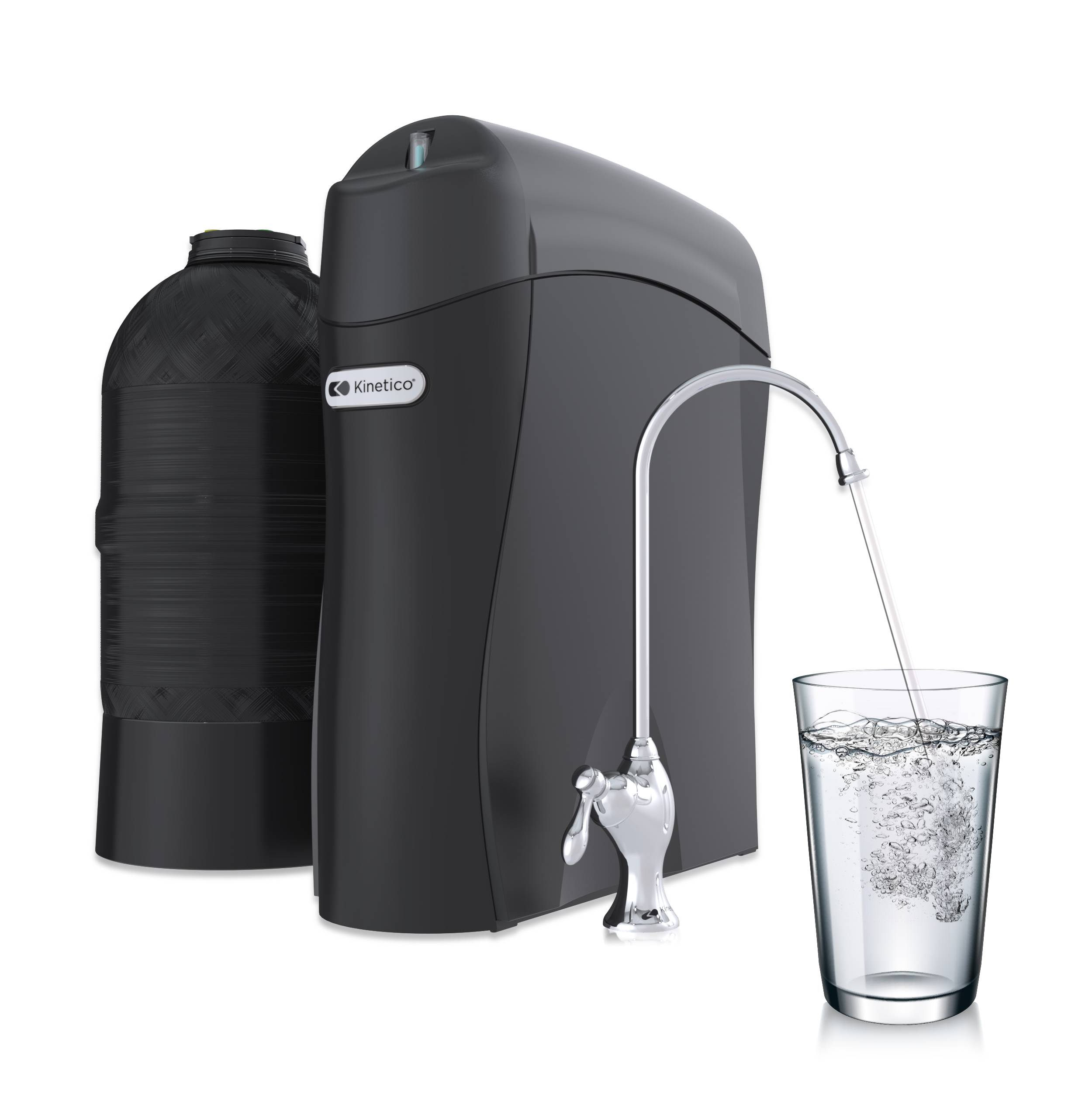If you have been thinking about a drinking water system for your home, you may have seen two popular technologies: carbon filtration and reverse osmosis filtration. What are the differences between these two filtration methods?
Carbon filters, sometimes called “activated carbon” or “carbon block,” filter water by running it through a specially manufactured carbon medium. As the water moves through the filter, impurities like chlorine and iodine bond with the carbon, which reduces tastes and odors in the water. Carbon filtration is commonly used in standalone systems and pitcher filters, appliances like refrigerators and water coolers, and even water treatment systems which include other technologies like RO filtration.
As you can see, Kinetico makes standalone carbon filters and reverse osmosis systems—each has its own purpose and strengths.
Reverse osmosis filters separate water molecules from other molecules by forcing the water through a semi-permeable membrane. RO systems often include several stages—ours include a prefilter, the RO membrane, a storage tank and a postfilter—each of which plays a part in ensuring the water is as high-quality as it can be when it reaches your faucet.
| Contaminant | Approximate Size(s) (μm) | Effectively Filtered By |
|---|---|---|
| Bacteria | 0.2–10 | Reverse Osmosis, Sometimes Carbon |
| Viruses | 0.004–0.1 | Reverse Osmosis |
| Lead | 0.1–0.7 | Reverse Osmosis, Sometimes Carbon |
| Pesticides & Herbicides | 0.001 | Reverse Osmosis |
| Sugars | 0.0008–0.005 | Reverse Osmosis |
This table shows that a number of common contaminants get right through carbon filtration, while reverse osmosis filtration removes just about everything.
These two technologies are very different, and they serve different purposes. When it comes to drinking water filtration for your home, though, there are a few important differences in the results they produce.
First, carbon filtration removes much less from your water than reverse osmosis. Carbon filtration systems have a variety of filtration ratings, from 0.5μm (micron) to 50 micron. Many carbon filtration systems have NSF Class I particulate rating which means that the filter can remove 85% of .5–1μm sized particles, whereas reverse osmosis systems can filter down to about .001μm—that’s a difference of about 500 times. To give you a size comparison, the average width of a human hair is 100μm.
Because an RO membrane’s pores are so small, it can effectively reduce or remove a much wider range of contaminants than a carbon filter can. Carbon filters can be formulated to remove specific contaminants like VOCs, arsenic, or lead, but an RO filtration system takes care of all of these and is much more effective at removing things like fluoride, which are too difficult to efficiently filter out with a carbon filter.
Carbon filtration excels at removing chlorine taste and odor. It also does a great job of capturing large particulates. Reverse Osmosis, on the other hand, will remove almost anything from your water, but it works better if the large particles are removed ahead of it to prevent premature fouling of the membrane. With a fouled membrane the quality and quantity of water is decreased.
There are many other factors to consider when choosing a drinking water treatment system for your home: price, space constraints, contaminant levels in your incoming water, etc. Getting your water tested and knowing what’s in your water is the best way to determine the right type of system for your home.


